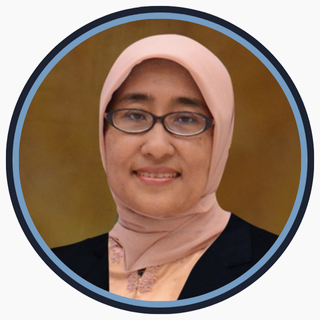AN OVERVIEW OF DENGUE HEMORRHAGIC FEVER CASES AND ENVIRONMENTAL FACTORS IN SUMENEP DISTRICT IN 2018
Downloads
Background: Dengue hemorrhagic fever (DHF) has been occurring in Indonesia for more than 50 years, and there were 65,602 cases of it in 2018 alone. Sumenep District reported the 12th highest number of DHF cases (292) in East Java Province in 2018. Purpose: This research aims to describe DHF in Sumenep District in 2018. Methods: This research is a descriptive study employing a cross-sectional design. The data used in this research were secondary data gathered from the Sumenep Health Office in 2018. The variables observed in this research were the epidemiological characteristics included in the epidemiological triangle”people, place (region), and time. Descriptive analysis was conducted to examine the DHF case distribution, using a frequency table, among the people, place (region), and time variables. Results: Sumenep District is home to 1,085,227 citizens, with a population density of 518 people/km2. The number of DHF cases in Sumenep District was 292, with the highest concentration of cases in the age range of 5–14 years (47.30%); the most cases were also male (57.19%). DHF often occurred in sub-districts with high population density, and more commonly in January. Conclusion: Most of the Sumenep District's DHF cases in 2018 were males in the age group of 5–14 years old.
Ali, K., & Ma'rufi, I. (2016). Study of factors caused dengue haemorrhagic fever case study: Pasuruan, Jawa Timur-Indonesia. Journal of Medical and Bioengineering, 5(2), 108–112. https://doi.org/10.18178/jomb.5.2.108-112
Angelina, C. R., & Windraswara, R. (2019). Factors related with dengue hemorrhagic fever incidence in 2008-2017. Unnes Journal of Public Health, 8(1), 64–72. https://doi.org/10.15294/ujph.v8i1.26549
Ayumi, F., Iravati, S., & Umniyati, S. R. (2016). Hubungan iklim dan kondisi lingkungan fisik rumah terhadap insidensi demam berdarah dengue di beberapa zona season di Daerah Istimewa Yogyakarta. Berita Kedokteran Masyarakat, 32(12), 455–460. https://doi.org/10.22146/bkm.8790
Chaiphongpachara, T., Pimsuka, S., Ayudhaya, W. S. N., & Wassanasompong, W. (2017). The application of geographic information system in dengue haemorrhagic fever risk assessment in samut Songkhram province, Thailand. International Journal of GEOMATE, 12(30), 53–60. https://doi.org/10.21660/2017.30.160601
Furuya-Kanamori, L., Liang, S., Milinovich, G., Soares Magalhaes, R. J., Clements, A. C. A., Hu, W., ... Yakob, L. (2016). Co-distribution and co-infection of chikungunya and dengue viruses. BMC Infectious Diseases, 16(1), 1–11. https://doi.org/10.1186/s12879-016-1417-2
Guo, C., Zhou, Z., Wen, Z., Liu, Y., Zeng, C., Xiao, D., ... Yang, G. (2017). Global epidemiology of dengue outbreaks in 1990–2015: a systematic review and meta-analysis. Frontiers in Cellular and Infection Microbiology, 7, 1–11. https://doi.org/10.3389/fcimb.2017.00317
Harapan, H., Michie, A., Mudatsir, M., Sasmono, R. T., & Imrie, A. (2019). Epidemiology of dengue hemorrhagic fever in Indonesia: analysis of five decades data from the National Disease Surveillance. BMC Research Notes, 12, 1–6. https://doi.org/10.1186/s13104-019-4379-9
Ishak, N. I., & Kasman, K. (2018). The effect of climate factors for dengue hemorrhagic fever in Banjarmasin City, South Kalimantan Province, Indonesia, 2012-2016. Public Health of Indonesia, 4(3), 121–128. https://doi.org/10.36685/phi.v4i3.181
Kasman, & Ishak, N. I. (2018). Analisis penyebaran penyakit demam berdarah dengue di Kota Banjarmasin tahun 2012-2016. Media Publikasi Promosi Kesehatan Indonesia, 1(2), 32–39. https://doi.org/10.31934/mppki.v1i2.176
Kesetyaningsih, T. W., Andarini, S., Sudarto, & Pramoedyo, H. (2018). Determination of environmental factors affecting dengue incidence in Sleman District, Yogyakarta, Indonesia. African Journal of Infectious Diseases, 12(Sp 1), 13–25. https://doi.org/10.2101/Ajid.12v1S.3
Kurniawati, N. T., & Yudhastuti, R. (2016). Hubungan iklim dan angka bebas jentik dengan kejadian demam berdarah dengue di Puskesmas Putat Jaya. Jurnal Ilmiah Kesehatan Media Husada, 5(2), 157–166. https://doi.org/10.33475/jikmh.v5i2.175
Masrizal, & Sari, N. P. (2016). Analisis kasus DBD berdasarkan unsur iklim dan kepadatan penduduk melalui pendekatan GIS di tanah datar. Jurnal Kesehatan Masyarakat Andalas, 10(2), 166–171.
Ministry of Health RI. (2018). Indonesia health profile, 2017. Jakarta. Ministry of Health RI.
Ministry of Health RI. (2019). Indonesia health profile 2018. Jakarta. Ministry of Health RI.
Nurdin, A., & Zakiyuddin, Z. (2018). Studi epidemiologi yang mempengaruhi kejadian demam berdarah dengue (DBD) di Kecamatan Johan Pahlawan. Jurnal Aceh Medika, 2(1), 77–85.
Nuryunarsih, D. (2015). Sociodemographic factors to dengue hemmorrhagic fever case in Indonesia. Kesmas: National Public Health Journal, 10(1), 10–16. https://doi.org/10.21109/kesmas.v10i1.813
Paramita, R. M., & Mukono, J. (2017). Hubungan kelembapan udara dan curah hujan dengan kejadian demam berdarah dengue di Puskesmas Gunung Anyar 2010-2016. The Indonesian Journal of Public Health, 12(2), 202–212. https://doi.org/10.20473/ijph.v12i1.2017.202-212
Pranata, I. W. A., & Artini, I. G. A. (2017). Gambaran pola penatalaksanaan demam berdarah dengue (DBD) pada anak di Instalasi Rawat Inap Rumah Sakit Umum Daerah Kabupaten Buleleng tahun 2013. E-Jurnal Medika Udayana, 6(5), 21–27.
Ratri, A. M., Wahyuningsih, N. E., & Murwani, R. (2017). Hubungan kepadatan hunian dengan kejadian demam berdarah dengue di Semarang. Jurnal Kesehatan Masyarakat (e-Journal), 5(5), 434–440.
Sirisena, P., Noordeen, F., Kurukulasuriya, H., Romesh, T. A., & Fernando, L. K. (2017). Effect of climatic factors and population density on the distribution of dengue in Sri Lanka: a GIS based evaluation for prediction of outbreaks. PLoS ONE, 12(1), 1–14. https://doi.org/10.1371/journal.pone.0166806
Sucipto, P. T., Raharjo, M., & Nurjazuli. (2015). Faktor-faktor yang mempengaruhi kejadian penyakit demam berdarah dengue (DBD) dan jenis serotipe virus dengue di Kabupaten Semarang. Jurnal Kesehatan Lingkungan Indonesia, 14(2), 51–56. https://doi.org/10.1512/iumj.2013.62.5040
Sumenep' Central Bureau of Statistics. (2018). Statistics of Sumenep District, 2018. Sumenep District: Sumenep' Central Bureau of Statistics.
Sumenep District Health Office. (2019). Health profile of Sumenep District, 2018. https://doi.org/10.1017/CBO9781107415324.004
Tomia, A., Hadi, U., Soviani, S., & Retnani, E. (2016). Kejadian demam berdarah dengue (DBD) berdasarkan faktor iklim di Kota Ternate. Media Kesehatan Masyarakat Indonesia Universitas Hasanuddin, 12(4), 241–249.
Villar, L. A., Rojas, D. P., Besada-Lombana, S., & Sarti, E. (2015). Epidemiological trends of dengue disease in Colombia (2000-2011): a Systematic review. PLoS Neglected Tropical Diseases, 9(3), 1–16. https://doi.org/10.1371/journal.pntd.0003499
Wardhani, P., Aryati, A., Yohan, B., Trimarsanto, H., Setianingsih, T. Y., Puspitasari, D., ... Sasmono, R. T. (2017). Clinical and virological characteristics of dengue in Surabaya, Indonesia. PLoS ONE, 12(6), 1–21. https://doi.org/10.1371/journal.pone.0178443
WHO. (2019). Dengue and severe dengue. Geneva.
Windiyaningsih, C., & Nurhastuti, T. (2018). Determinants of dengue hemorrhagic fever outbreak in Cipayung, East Jakarta. Journal of Health Science, 6(2), 123–131. https://doi.org/10.17265/2328-7136/2018.02.008
- Every manuscript submitted to must observe the policy and terms set by the Jurnal Berkala Epidemiologi
- Publication rights to manuscript content published by the Jurnal Berkala Epidemiologi is owned by the journal with the consent and approval of the author(s) concerned. (download copyright agreement)
- Complete texts of electronically published manuscripts can be accessed free of charge if used for educational and research purposes according to copyright regulations.

JBE by Universitas Airlangga is licensed under a Creative Commons Attribution-ShareAlike 4.0 International License.























